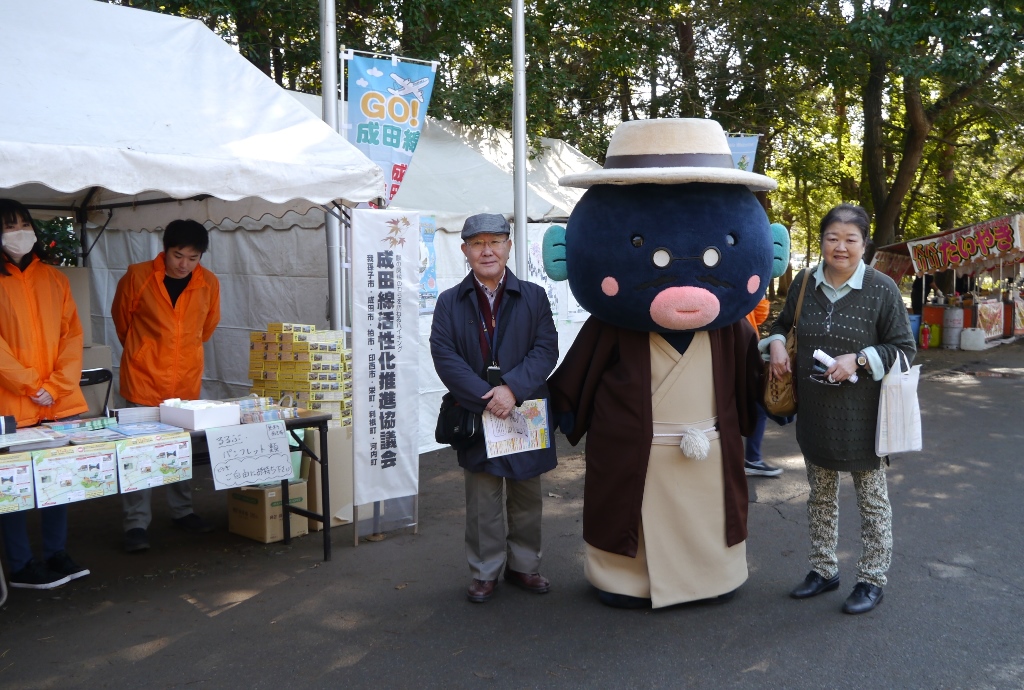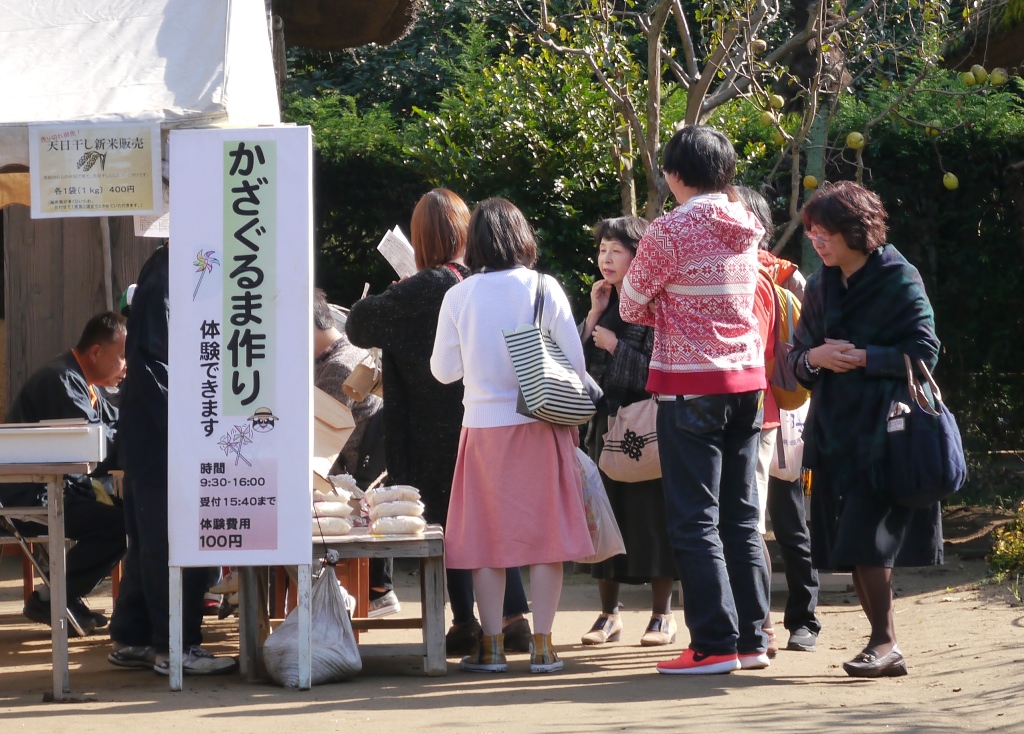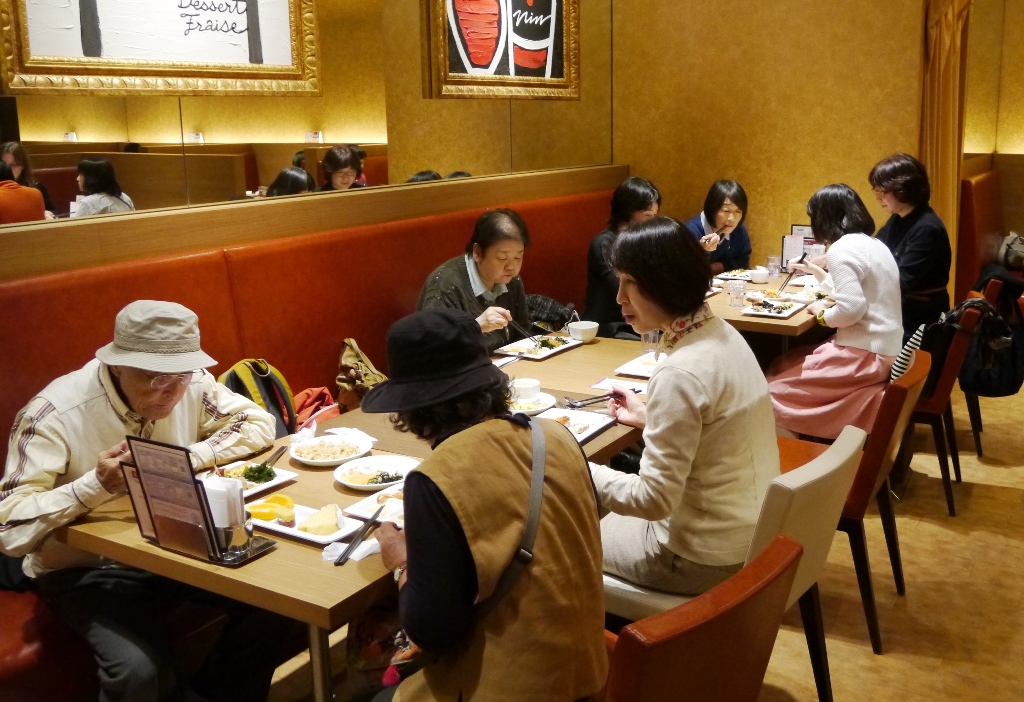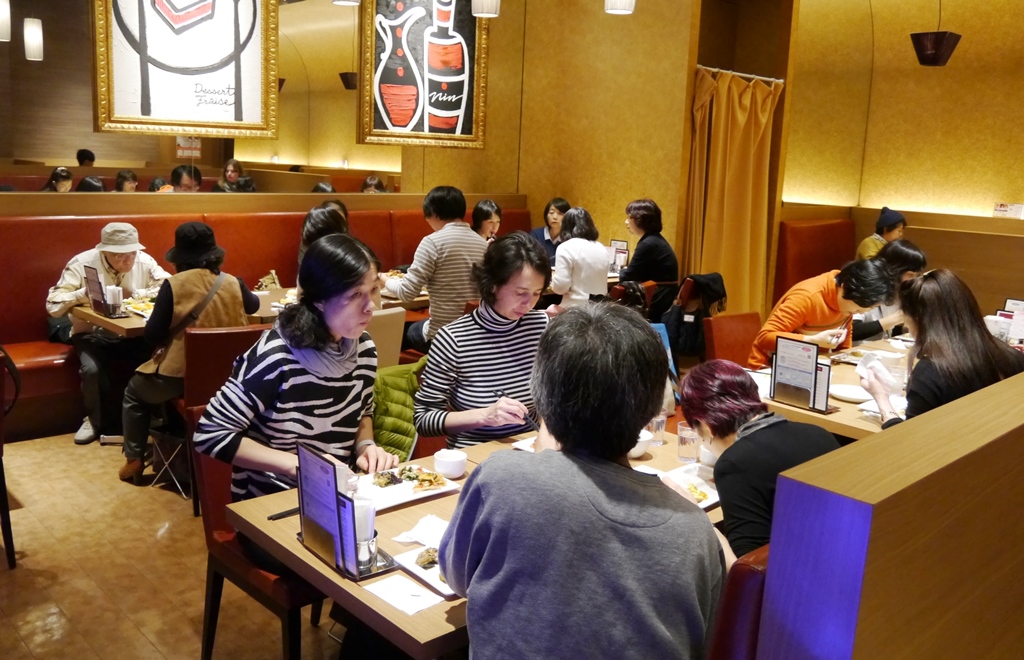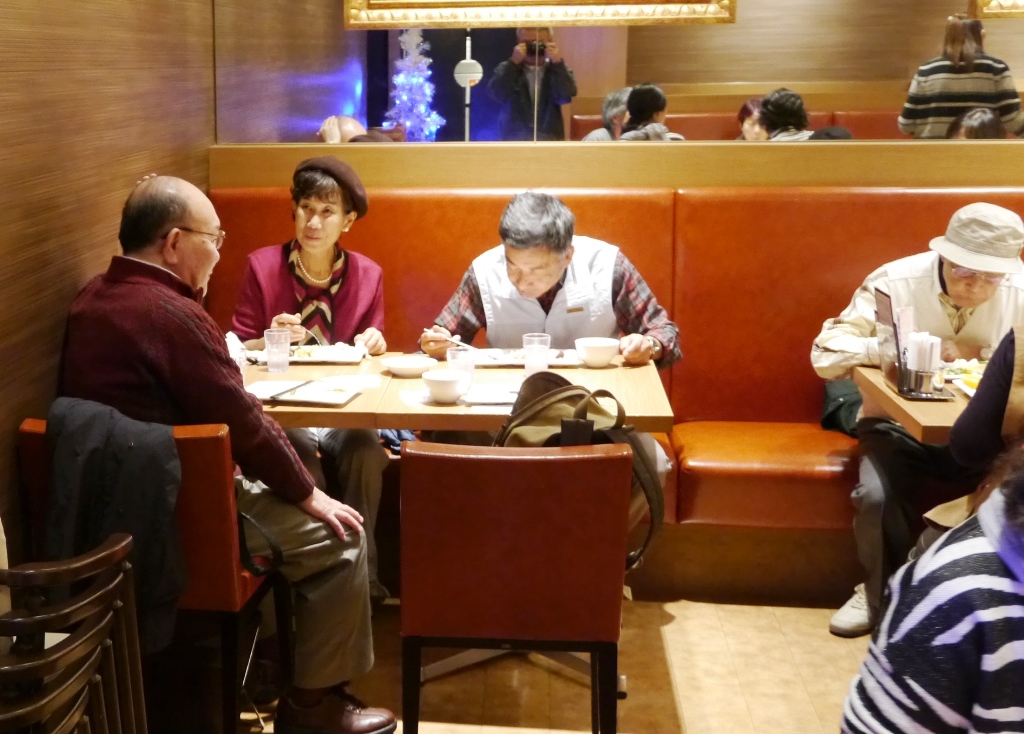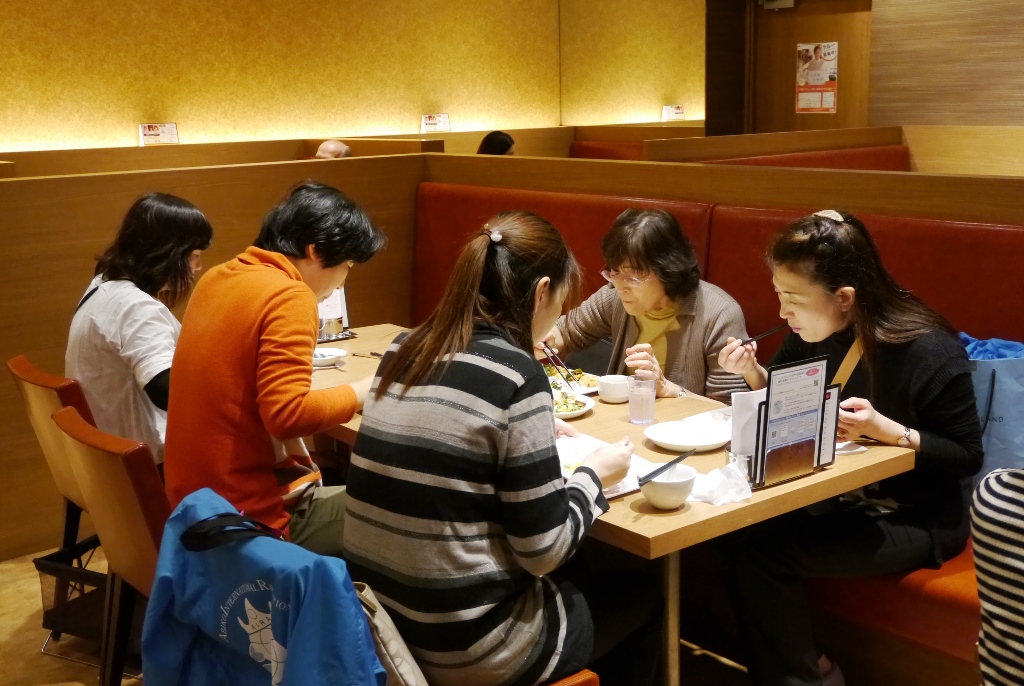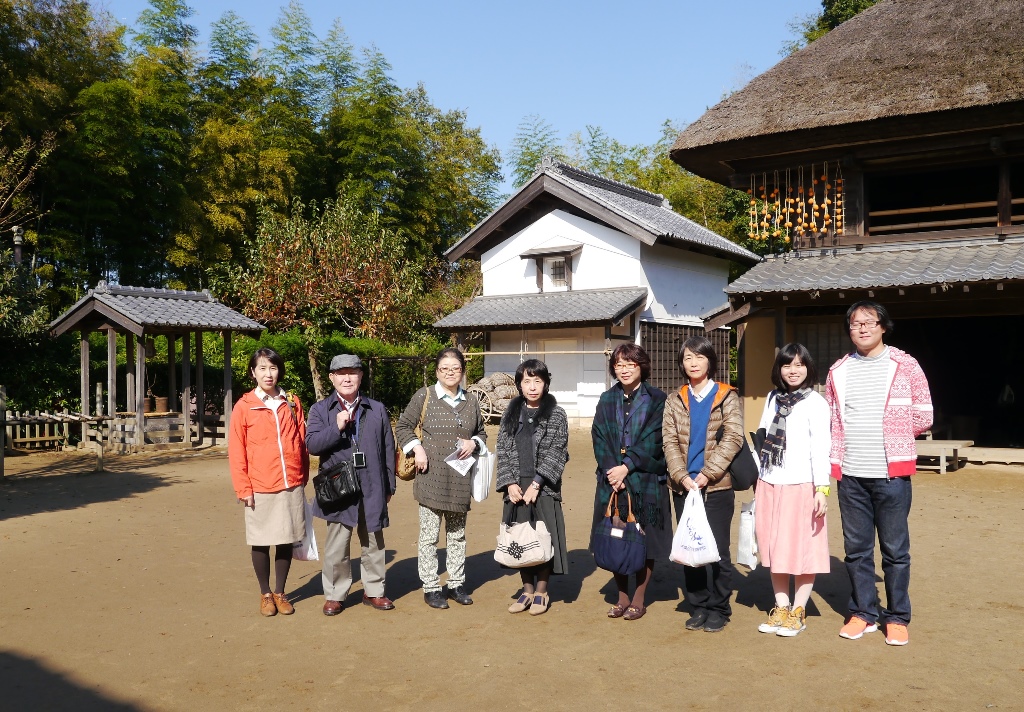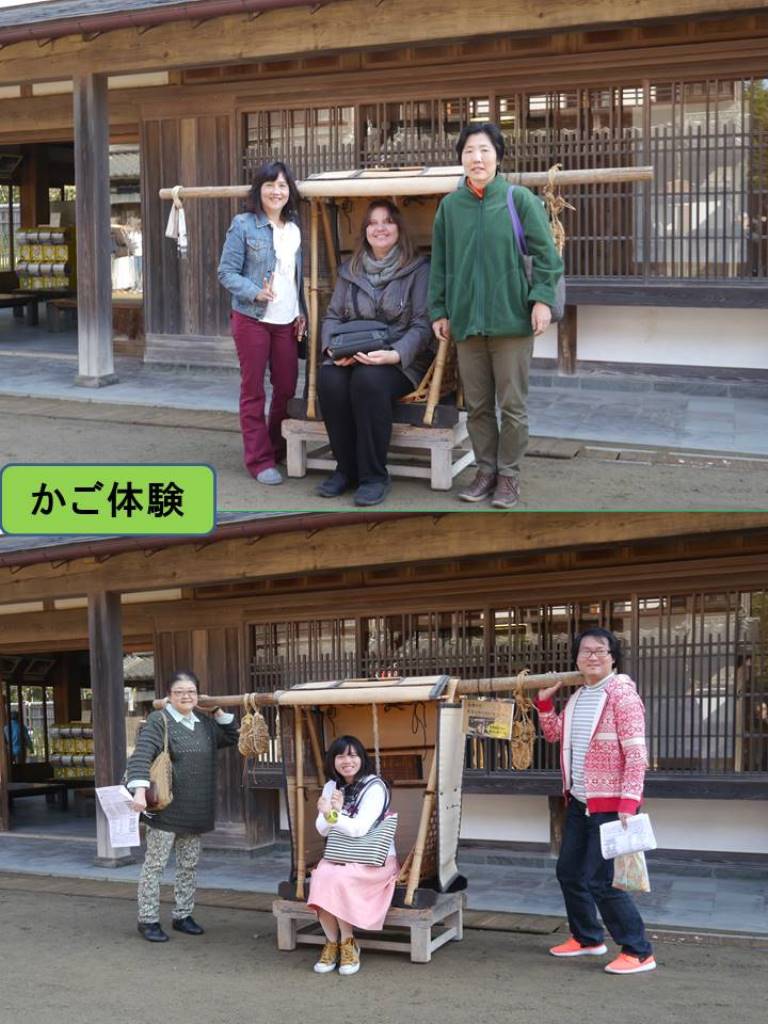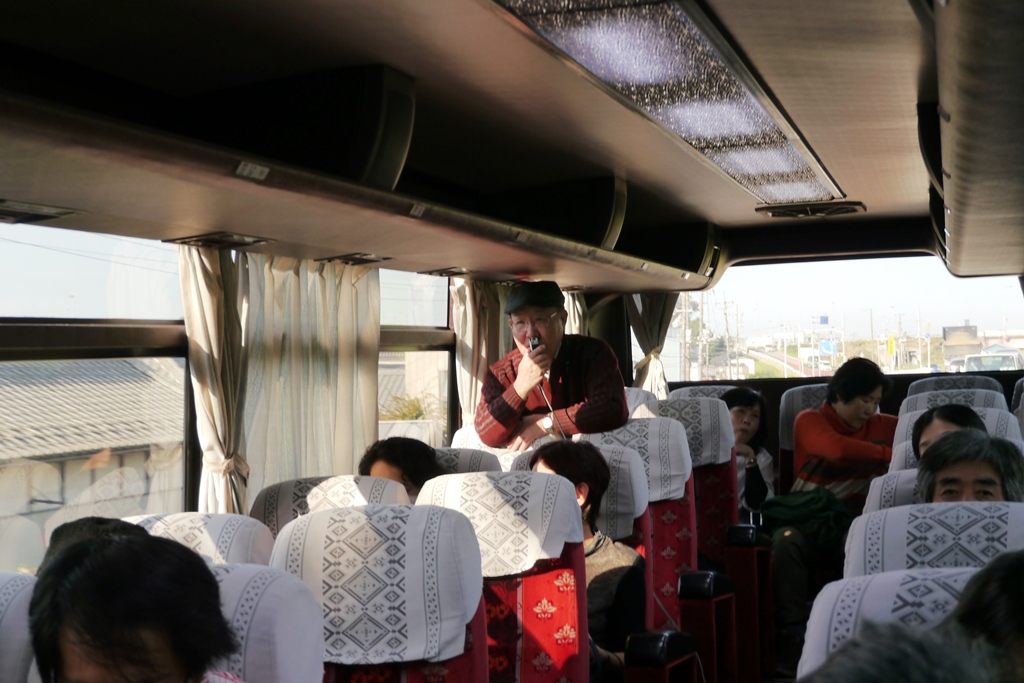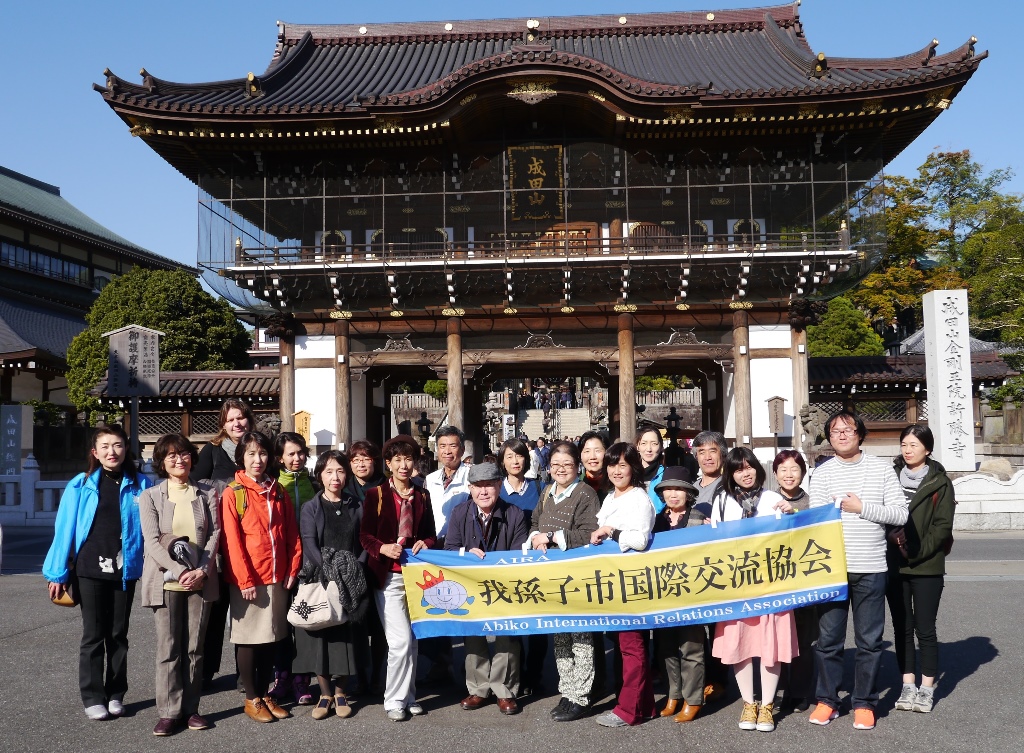
A bus tour named “The tour for experiencing Samurai houses and townscape in Edo era- appreciating autumn at Boso-no-Mura Village” was held on the Culture Day, Nov. 3rd 2016, as part of “Culture Seminar for foreign residents” organized by the AIRA Culture and Study Section.
Date/Time: Thursday, Nov. 3rd, 2016 8:15a.m. – 5:00p.m.
Tour si Tour sites: Boso-no-Mura Village and Naritasan Temple
Partici Partipants: 23 people (17 including 7 foreign people, 6 AIRA staff members; Aburano, Kaku, Matsuki, Osaki, Sakazume and Araki)
The date, place and tour fees were set to meet foreign residents’ preference.
Rain clouds on the day before had gone away, and a blue sky came. All participants enjoyed the tour thoroughly in the open air. A special event, Furusato Matsuri, Hometown Festival, was held at the Experience Museum Chiba Prefectural Boso-no-Mura Village. On this occasion, admission fee was free. Our visit fell on such a special occasion so we entered the village without a fee!
All participants walked along looking at buildings built after various kinds of shop in Edo-era, and experienced putting on Samurai warriors’ armor and elaborately colored kimonos at Samurai residential area. Visitors also stopped by farmer’s houses where dried persimmons were hanging under the eaves of the houses, depicting the seasonal scenery of autumn in Japan.
Travelers experienced another attraction, cruising in a canal on board a small boat. The boat was steered by a boatman with a long bamboo pole, which impressed us with his extensive maneuvering skill. People bought vegetables at a special shop run by high school students, enjoyed rice cakes and Zouni, rice cakes soup. (Lunch time is coming soon though….)
Due to the time constraints, other attractions such as making a straw-coaster and Pochi-bukuro, a small gift-giving envelope, were skipped unfortunately. At the Cosplay no Yakata in the nearby Sakae Town, “The 1st Historical Cosplay Competition” was prepared. If time allows, it would be fun for you to try to put on a feudal era costume. Close by the village entrance we came across Abiko municipal office staff publicizing the city together with the city’s mascot, Unakichi-kun (a cute eel-like-costumed man), at the booth of the Association for Facilitating Revitalization of Towns along the JR Narita Line.
We had a lunch at the cafeteria-type restaurant in AEON shopping mall near the Naritasan temple, where a large variety of plates such as Western, Chinese, Japanese food and desserts were offered. Every food plate looked so nice that it was difficult for us to choose one instantly. Each of us took and ate little volume of food in a plate at one time, then rushed to get another plate again, thus went back and forth between our tables and food service corner. A woman said, “I’m full, so no need to eat at home this evening!” We wondered if a supper was served to her family in the evening?
After the lunch, we headed to the Naritasan temple. We purified our hands in the water basin at the entrance and went up steep stairs for strolling around the temple. It was a bit too early to enjoy Autumn Leaves Viewing Festival (scheduled in mid-November) there, but we found elaborated kimono-clad small boys and girls together with their families for traditional Shichigosan ceremony (celebrating 7, 5 and 3 years old kids for their healthy growth) at the temple, which is one of the seasonally notable Japanese events in November. Some members walked in the precincts of the temple and the Naritasan park attached to the temple’s grounds, and some others window-shopped along the main approach to the temple until the time to get back. Although Narita city is relatively close to Abiko, most of us have not visited recently, so this visit might help them recall good and old memories.
At this tour seven people from five countries, China, Malaysia, Poland, South Korea, and Uzbekistan experienced a bit of the history of Japan. We are proud of this event which helped them enjoy Japanese culture comparing with the culture of the respective country, while appreciating the progressing autumn season of Japan.
(No.16-20 Translated by T. Yoshida)

